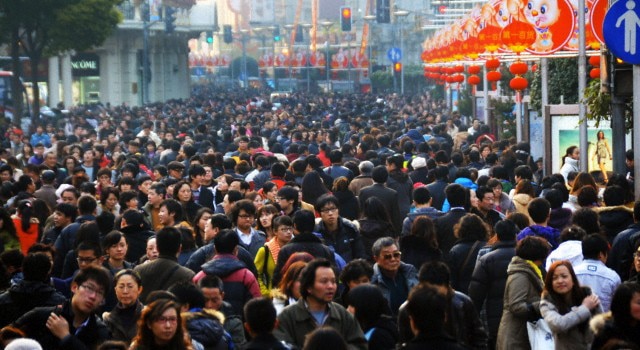
When you think of China, one of the first things that pop into your head would be “lots of people”. China has the largest population in the world with approximately 1.4 billion people, yet it also has one of the greatest gaps between the amounts of men and women.
Since ancient times, there has always been a favouritism for men in Chinese society; only men could rule while women were wives or concubines. This was partly due to Confucianism, which was a sort of system of social and ethical philosophy that was used as the standard of proper behaviour in China. It allowed men to be evaluated based on how well they carried out their duties while women were evaluated on their attitude and role as a wife and mother. This sort of thinking has been carried down for generations so that the idea that men are more superior has stuck.
With the one-child policy being introduced in 1979 to help combat the rapidly growing population, it was to be expected that parents would wish to have a son over a daughter. However, this would only lead to more problems. There is a massive gender imbalance in China, with many families choosing to have an abortion if they have a girl. They believe that men are more able to become successful in the future and thus can care for the parents and seniors better. Last year there were 33.5 million more men to women with the male population being around 708.15 million and the female population being around 674.56 million.

The one-child policy resulted in millions of “missing girls” who weren’t actually missing, but unreported at birth. In the mid-80s, the government was more lenient on the one-child policy in rural areas. If a family’s first child was a girl, they were allowed to have a second. Yet many families ended up having multiple children with only two of them being registered.
China also has a long history of female infanticide, where newborn baby girls are killed or abandoned. There have been multiple reports of those bodies being found in dumpsters, thrown out before they could even live. Thankfully, there have been multiple laws created in order to deal with it. Marriage laws and the Women’s Protection Law prohibit the act while the Maternal Health Care Law prohibits the use of technology to determine the sex of foetuses.
This lack of women made it hard for men to find wives as well as the fact that more and more women had begun to wait until later on for marriage. Those who were still unmarried by 25 have been given the label as China’s “leftover women”. They are instead deciding to put their efforts into schooling and work to secure a good future for themselves rather than starting a family.
The one-child policy officially ended in 2015 and the two-child policy was introduced the following year. It helped to decrease the imbalance, but its effect did not last very long as the birth rate dropped once again in 2017.

In 2016, there was an increase of 1.3 million more births than the previous year following the two-child policy. However, in 2017, the birth rate dropped from 1.295% to 1.243%. Since many women are waiting until a later age to marry, they grow past the typical age for childbirth. Lots of couples are also deciding to follow the previous generation’s trend in only have one child or none at all. Many people believe that the birthrates will continue to fall and that a sharp decrease will begin by 2025. By 2067, they estimate the population will drop to 1 billion.
China needs a way to encourage the younger couples to have children, but they also need to be careful not to cross the fine line of overpopulation. The question is, how exactly can they go about doing that without recreating a problem of the past?
References:

Dear Kayla:
This was a very intriguing and somewhat disturbing article. It was really effective how you started out with a broad explanation of the issue, that being that many people in China view men as superior. But then you made sure to keep and or elevate the level of reader attentiveness by going into more detail about the gross mistreatment of new born females and the statistics of the population unbalance. It flowed smoothly and effortlessly and each fact or point connected with the next.
I honestly don’t have any grows for you. This was a well paced article which held my attention and all I can say is I will definitely look out for more of your writing in the future. =)
Sincerely,
Reegan